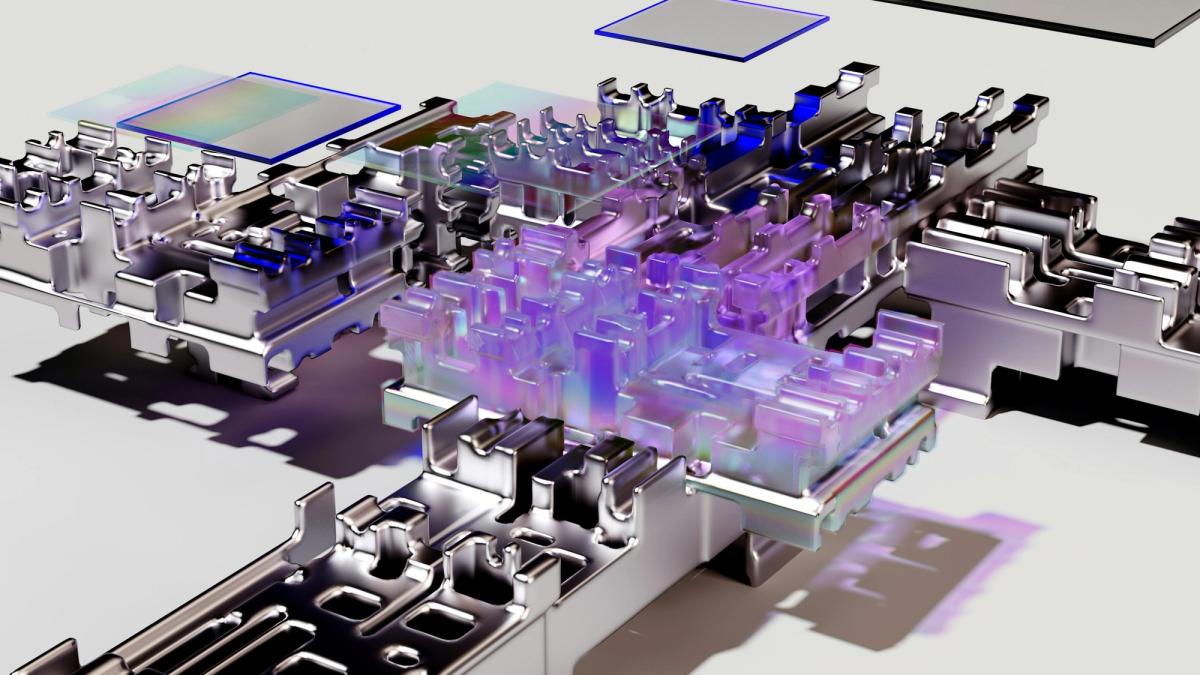What is Artificial Intelligence Optimization and Why is it Important?
Published on May 19, 2025
Get Started
Fast, scalable, pay-per-token APIs for the top frontier models like DeepSeek V3 and Llama 3.3. Fully OpenAI-compatible. Set up in minutes. Scale forever.
Have you ever deployed an AI model only to find that it didn’t perform as well in the real world as it did in development? Yes, all those metrics looked good, but once the model was in production, it failed to meet the performance goals that mattered. It either made predictions too slowly or it was inaccurate and produced unreliable results. This scenario is all too common in artificial intelligence today. Artificial intelligence and machine learning optimization can help prevent these headaches by improving your model’s performance to meet real-world expectations before deployment reliably.
This article will explain AI optimization, why it matters, and how to improve your AI models today. One tool that can help you achieve your optimization goals is Inference’s AI inference APIs. These solutions improve your models’ performance and efficiency to meet real-world expectations.
What is Artificial Intelligence Optimization?

Artificial intelligence optimization systematically alters an AI model’s components to enhance performance levels. This can entail manipulating rates or altering structural elements to boost the model’s accuracy and speed. The objective is to optimize the model's performance while reducing resource usage.
Optimization occurs at multiple points throughout an AI model's lifecycle, including the training process, testing procedures, and real-time operations. By precisely adjusting these parameters, the model improves its ability to address the issue it was developed to address.
Why is it Important?
Artificial intelligence optimization accelerates information processing and decision-making in AI systems, substantially increasing their speed and responsiveness to tasks. Through optimization, AI developers gain the ability to address complex problems with heightened accuracy, a distinct advantage that propels technological advancements further. It critically facilitates the scalability of AI solutions, empowering them to dissect expansive data sets efficiently.
These applications can be tailored with unprecedented precision via meticulous AI model tuning, meeting specific user requirements. Optimization is integral for boosting system efficiency and maximizing versatility and adaptiveness in all aspects of artificial intelligence.
How Can AI Optimization Improve the Performance of Machine Learning Algorithms?
1. Enhancing Operational Efficiency
Artificial intelligence optimization enhances operational efficiency through multiple mechanisms. Foremost among them is code optimization, which reduces memory and CPU usage.
This strategic reduction in infrastructure costs precipitates several benefits; most notably, adjustments to a model’s design speed up result production times, thus facilitating faster decision-making.
2. Improving Model Effectiveness
Directly optimizing model effectiveness enhances the accuracy and reliability of AI outputs. For example, when we retrain models with higher-quality data, their decision-making accuracy rates significantly improve. By addressing AI model tuning for effectiveness, a process that ensures adaptability to changes, we maintain relevance and utility over time.
3. Addressing Model Drift
Machine learning algorithms face a substantial challenge in the form of model drift. To begin, AI optimization strategies can mitigate environmental changes that engender inefficiencies.
Retraining models actively counter data drift and guarantee that optimal inferences from the model are not affected. Maintaining the model’s efficiency and effectiveness over time requires essential, regular efforts in AI optimization; these safeguard against inevitable shifts within data environments and operational contexts.
4. Deployment Modification
Deploying models in a modified manner can immediately enhance performance. For instance, when we deploy a model on more robust hardware, its performance is temporarily augmented. This approach must supplement deeper optimization endeavors that tackle the fundamental causes of inefficiency.
5. Source Code Enhancements
Enhancing a model’s source code may yield substantial performance improvements: adopting more efficient libraries or frameworks can boost AI efficiency. This strategy, though demanding significant effort, proves worthwhile for specific models due to the potential of enhanced performance.
6. Regularization
Regularization tackles underfitting and overfitting by adjusting the model’s weight on different data types. This optimization enhances its data interpretation capabilities, guaranteeing accurate decisions based on real-world inputs.
Related Reading
What are the Key Factors to Consider When Optimizing AI Models?

The quality and relevance of training data lay the groundwork for AI optimization. High-quality data ensures accurate pattern learning.
The significance of the data to the problem improves model effectiveness. Foundational selection in this process is all about data.
Algorithm Selection: An Essential Step for AI Performance
The efficiency of AI hinges on selecting the appropriate algorithm. Various machine learning algorithms cater to distinct problems, with some exhibiting superior computational effectiveness. Consequently, choosing the right algorithm is pivotal for achieving optimal performance in AI.
Model Complexity: Balance is Key for AI Tuning
Balancing the complexity of models is key to practical AI model tuning. Underfitting may occur with overly simplistic models, whereas overfitting can result from excessively complex ones. Thus, finding an optimal balance is essential.
Computational Resources: Use What You Have Wisely
The precise utilization of computational resources is vital to optimal artificial intelligence optimization. The speed of training and efficiency of models hinge on the availability of computational resources.
Regularization Techniques: Prevent Overfitting and Simplify Models
L1 and L2 regularization techniques, crucial to AI optimization, actively encourage the development of simpler models. Thus, they play a major role in preventing overfitting and ensuring generalization.
Hyperparameter Tuning: Optimize Your Model Parameters
Methods such as grid search enable the discovery of optimal model parameters, a crucial step in tuning AI models for efficiency and accuracy. Hyperparameter tuning significantly amplifies performance, making it an indispensable aspect of AI model enhancement.
Continuous Monitoring and Updating: Keep Your AI Model Running Smoothly
Maintaining AI efficiency necessitates continuous monitoring and updating of the models. Regular retraining to address data drift guarantees sustained accuracy and reliability in the model performance.
5 Key AI Optimization Techniques

1. Gradient Descent: The Most Popular Optimization Algorithm
Gradient Descent is one of the most popular optimization algorithms that works by updating the parameters of a model to minimize its loss function. The concept is to calculate the gradient of the loss function with respect to the model parameters and move in the opposite direction of the gradient to minimize the error.
Some of these include:
- Stochastic Gradient Descent (SGD) is an extension of the basic method that updates the parameters after each data point, thus accelerating the convergence for large datasets.
- Adam (Adaptive Moment Estimation) is a type of gradient descent that adjusts the learning rate of each parameter based on the past gradients by using the first and second moments of the gradients. This makes it particularly effective when the data is complex and noisy.
2. Hyperparameter Tuning: Optimize Your Model's Settings
The training process and model structure rely on hyperparameters, including:
- Learning rate
- Batch size
- Number of layers
Hyperparameter Tuning is essential for obtaining optimal model performance. Hyperparameter testing through Grid Search involves evaluating each combination of selected hyperparameters through exhaustive examination, but this approach becomes costly. Random Search generates hyperparameter settings randomly, demonstrating improved efficiency compared to other methods. Bayesian Optimization develops a probabilistic model of the optimization function, which uses previous results to direct the search towards better hyperparameter settings. This approach reduces the required trials, especially in large search dimensions.
3. L2 Regularization (Ridge Regression): Prevent Overfitting
L2 regularization adds to the loss function a penalty term that is a function of the squared magnitude of model weights. To this end, it penalizes large weights to prevent the model from overfitting to the noise in the data.
This technique is most useful when the model has many features or has limited training data. It helps the model assign nearly equal weights to the features and thus improves its generalization to the data for which it has not been trained. It is widely applied in linear regression models, neural networks, and machine-learning tools to prevent overfitting.
4. Bayesian Optimization: The Intelligent Way to Find Hyperparameters
Bayesian Optimization is a sophisticated method for optimizing hyperparameters in machine learning models. Based on past evaluations, a probabilistic model (often using Gaussian processes) is built to predict the performance of different hyperparameter configurations.
This allows the optimization process to concentrate on the best areas of the search space, both exploring new combinations and exploiting known good configurations. Because of this, it can find the optimal set of hyperparameters more efficiently than traditional methods like grid or random search, which is helpful in high-cost or time-intensive optimization tasks.
5. Early Stopping: Stop Overfitting Before It Starts
Early stopping is a method for preventing a model from overfitting during the training process. A model monitors performance on validation data and ceases training when it shows no improvement over a defined number of iterations or patience periods. This approach prevents the model from getting more complicated, which happens when it learns noise within the training datasets.
Early stopping improves the model’s generalization ability while conserving computational resources by stopping training before it becomes unnecessary. It is a commonly employed technique within deep learning models containing numerous parameters because it helps prevent overfitting.
Related Reading
AI Optimization vs. Machine Learning vs. Generative Engine Optimization

AI optimization improves the performance and efficiency of AI systems. More specifically, it helps find the fastest way to complete tasks.
For example, it can help determine the quickest route for delivery drones or schedule factory tasks to optimize performance. AI optimization can reduce the time, cost, and resources required to complete a task and is helpful in various industries, including logistics, manufacturing, and energy.
What Is Machine Learning Optimization?
Machine learning optimization focuses on improving machine learning models so they make better predictions and decisions. It helps AI learn from information to improve accuracy over time, such as when it can recognize faces in pictures or suggest things to buy.
Machine learning optimization is crucial for developing models that operate reliably in the real world and can be applied in any industry that uses AI. For example, it can help reduce errors in medical diagnoses, improve predictive text, and enhance the performance of self-driving cars.
What Is Generative Engine Optimization?
Generative engine optimization is a specialized subset of artificial intelligence optimization that focuses on improving generative AI systems like large language (LLMs) and diffusion models. It helps make the content these models create more precise, realistic, and practical for specific tasks.
For example, optimizing a chatbot can make its answers sound more natural, while enhancing a picture-generating model can improve the image quality. Generative engine optimization can also boost the creativity and efficiency of these systems, enabling them to make better results more quickly.
AI Optimization
- Definition: Helps find the best way to do a task. For example, it can figure out the fastest way to deliver something.
- Focus: Makes tasks quicker and more efficient by choosing the best options.
- Techniques: Uses different methods to find the best solutions, often by trying out many options.
- Goals:
- Save time
- Reduce costs
- Use resources more wisely
- Examples of Use:
- Planning delivery routes
- Scheduling tasks in factories
- Managing energy in buildings
Machine Learning
- Definition: Learns from information. It gets better over time, like recognizing faces in pictures or suggesting things to buy.
- Focus: Helps AI learn patterns so it can make better guesses or decisions.
- Techniques: Works with a lot of information to help AI see patterns and improve.
- Goals:
- Improve accuracy
- Learn from past information
- Examples of Use:
- Predict what someone might want to buy
- Identify objects in photos
- Block unwanted emails
Generative Engine Optimization
- Definition: Makes things it creates better, like making chatbot answers sound more natural or improving the quality of pictures it makes.
- Focus: Makes AI-generated content, like text or images, clearer and more realistic.
- Techniques: Fine-tunes AI to create better results, such as clearer images or better answers.
- Goals:
- Make AI-created content look or sound more real
- Increase relevance and clarity
- Examples of Use:
- Helps make chatbot answers clearer
- Improves AI-created art
- Enhances the quality of music made by AI
Start Building with $10 in Free API Credits Today!
Inference delivers OpenAI-compatible serverless inference APIs for top open-source LLM models, offering developers the highest performance at the lowest cost in the market. Beyond standard inference, Inference provides specialized batch processing for large-scale async AI workloads and document extraction capabilities designed explicitly for RAG applications.
Start building with $10 in free API credits and experience state-of-the-art language models that balance cost-efficiency with high performance.





